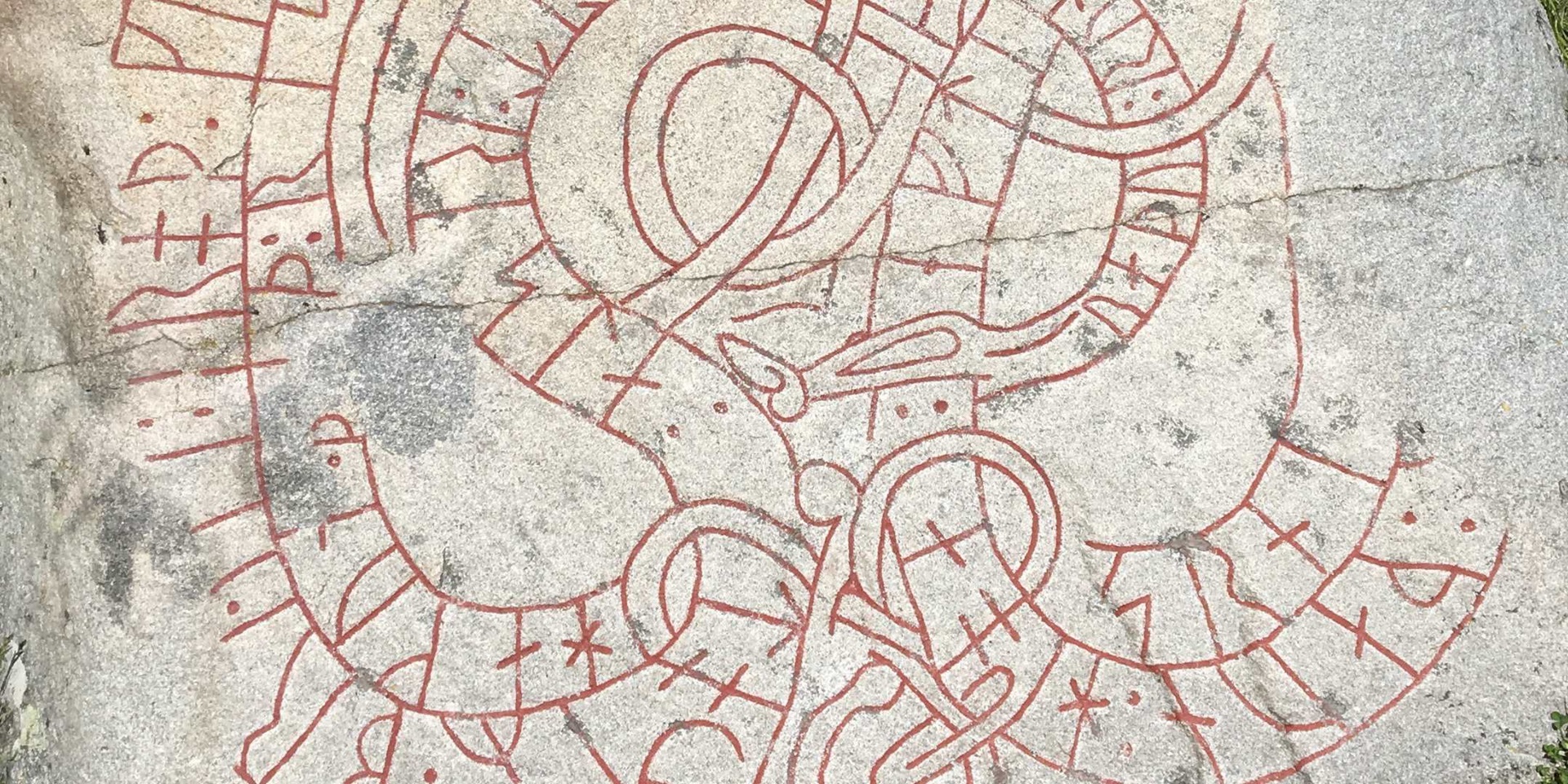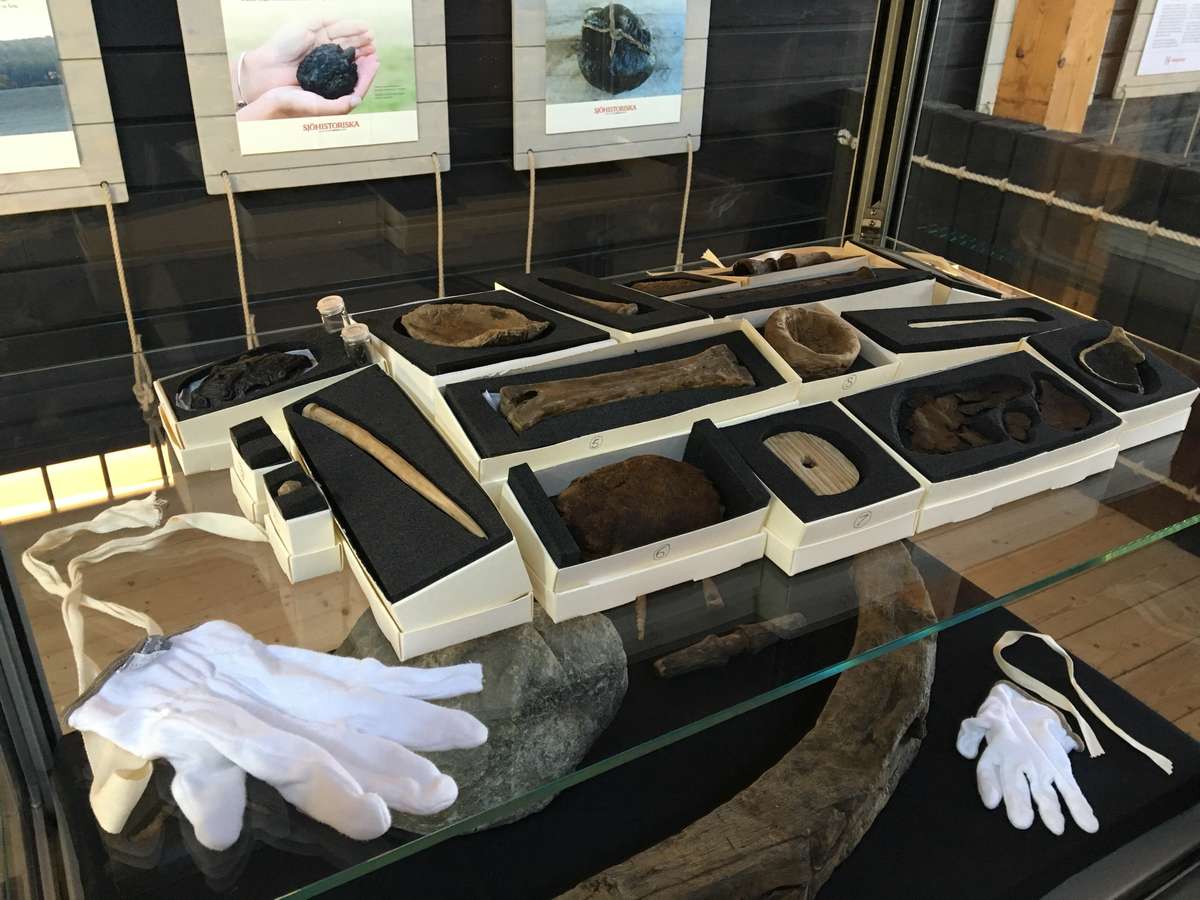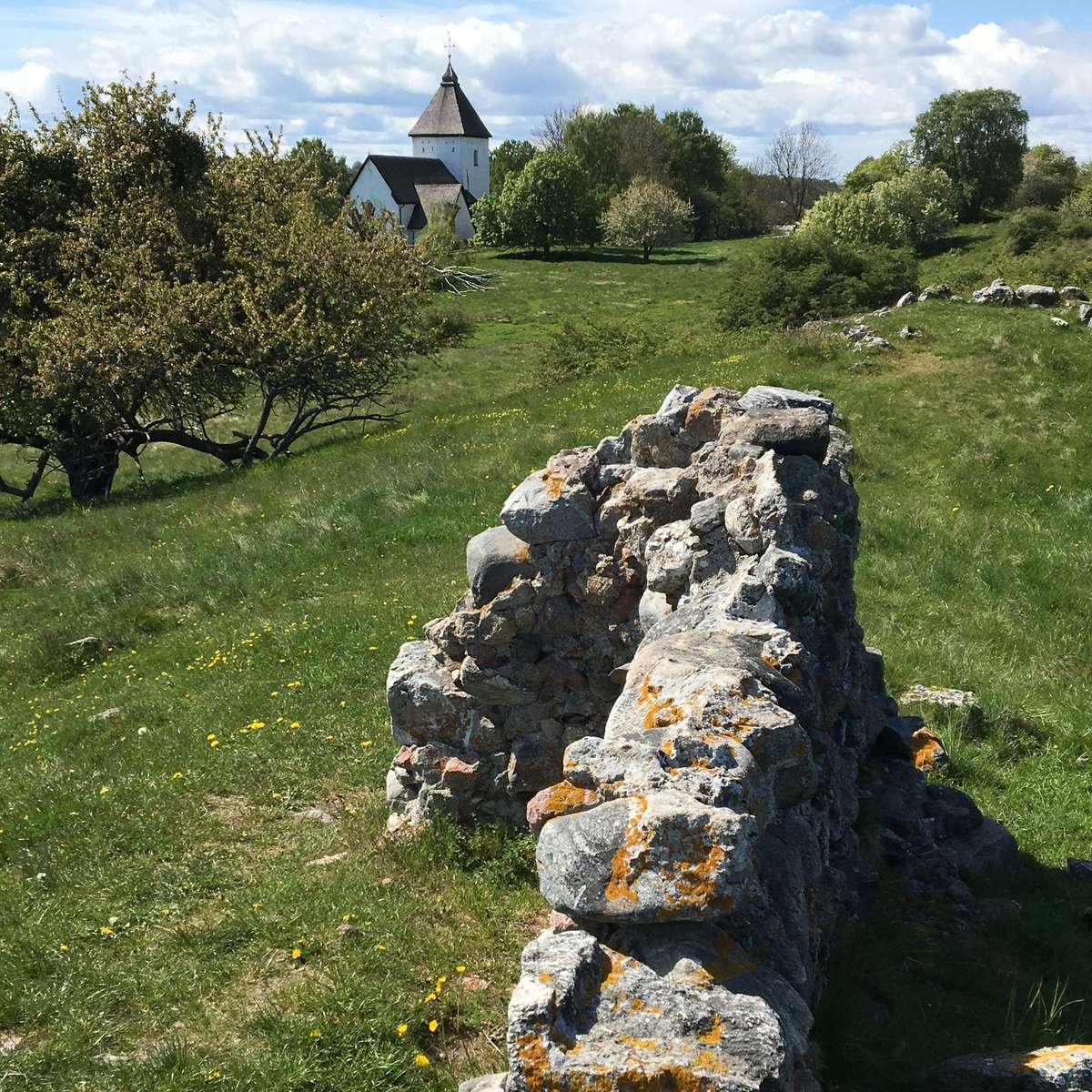

Viking Age burial mounds at Birka, Sweden
This is part of a series by Curator Dr Stephen Gapps who received an Endeavour Executive Fellowship from April to July 2016. Stephen is based at the Swedish History Museum and the National Maritime Museum (including the Vasa Museum) in Stockholm, Sweden. He is working on several Viking Age and other maritime history and archaeology related projects
This is the second part of two blog posts on maritime archaeology at Birka, Sweden.
Spoiler alert – Bjorn Ironside from the television series The Vikings dies in the end. I know because I walked over his grave mound – the biggest one on the most prominent peak in a line of hills of the island of Munsö, just northwest of Stockholm in Sweden.
After being invited to assist in curating a display of Birka Viking Age at Birka, it was time to install the display case at the Birka Museum on the island of Björkö in Lake Mälaren. And to visit the grave mound of Bjorn Ironside, son of Ragnar Lothbrok. Not the guy from the TV series, but pretty certainly the actual, historical guy.

View from the ferry in Lake Malaren, en route to Birka
Birka is about an hour and a half slow boat ride from Stockholm. The ferry takes tour and school groups out to the island during the summer months. After a couple of stops to deliver newspapers to some of the small islands, passing by fishermen and some impressive forested, rocky shorelines, Birka appears – dotted with small fields and pine trees. It is a very different landscape to the one in the Viking Age.

Looking over the Birka township site
Around the year 800 the island would have been completely barren, denuded of valuable trees used in buildings and ship construction. The town was on the water’s edge, now around 5 metres lower. A defensive wall joined the harbour, town and the prominent fortress on the rocky hill above. Any visitor to this, the most famous trading centre throughout much of the Viking Age could also not have failed to have seen the hundreds and hundreds of burial mounds large and small that increasingly surrounded the town complex over time.

An aerial map showing the intense clustering of over 3,000 burial mounds
Once the school groups had left, myself, archaeologist Nina Eklöf from Sjöhistoriska and osteoarchaeology (human and animal bones) student Matilda Fredriksson had the island pretty much to ourselves – apart from the caretaker, a farmer and some sheep. Nina, who has spent several summers working on the island since the 1990s, showed us around, pointing out the remnant landscape and features that make Birka one of the most important Viking Age archaeological sites, now World heritage listed.
Birka also happened to be the place the first Christian monks became established in Sweden. We tend to forget that Christianity co-existed with pre-Christian religions in Scandinavia. As early as 829, after a request from the Swedish king Björn at Hauge (probably Bjorn Ironside’s grandson) the German priest Ansgar was appointed as missionary to the Swedes. One thousand years later, in 1834, the so-called Ansgar Cross was built to commemorate the patron saint of Scandanavia. In 1934, an intriguing art-deco outdoor chapel was also built nearby.
St Ansgar’s Cross symbolically – and perhaps smugly – looks out across the site of the Viking Age township of Birka.
But we also had other work to do. Carefully installing the objects that were found in the harbour by maritime archaeologists, we set about creating a display case that showed the variety of artefacts and their amazing preservation after over a thousand years in the mud.

The almost complete display case, ready for the summer tourist invasion
The next day it was time to leave Birka and we were taken across to the nearby island of Adelsö by Birka’s ever-helpful and friendly caretaker Leonard. Seeing the harbour foreshore from the water, as it would have been seen by people coming from such places as Frisia, Anglo-Saxon England, Germany, the Baltic countries, and even Greeks from Byzantium (albiet with the water level much higher) was a fantastic way to visualise the site, even if it is a little crowded with trees these days.

The jetty at Birka looking towards the original township

A small reconstructed Viking Age village at Birka
From excavations at Hovgården on Adelsö, across from Birka, it is believed this was the site where the rulers of Birka, perhaps Kings, resided. A runestone was found here and there are remains of a large hall, which was subsumed by a medieval tower.
Then it was time to visit the grave of Bjorn Ironside. While it hasn’t been confirmed Bjorn’s father Ragnar Lothbrok was an historical figure (he may have been a conglomeration of various people), he was apparently the father of many renowned sons, including Ivar the Boneless, Halfdan Ragnarsson, Sigurd Snake-in-the-Eye, Ubba and Bjorn Ironside – made famous by Alexander Ludwig in The Vikings television series.
Our selection of Birka Harbour material will be on display at the Birka Museum this summer.
With many thanks to Nina Eklöf, Sjöhistoriska
















